Suzanne Santoro (Brooklyn, *1946).
We are presenting two never-seen-before series Santoro created between 2004 and 2012.
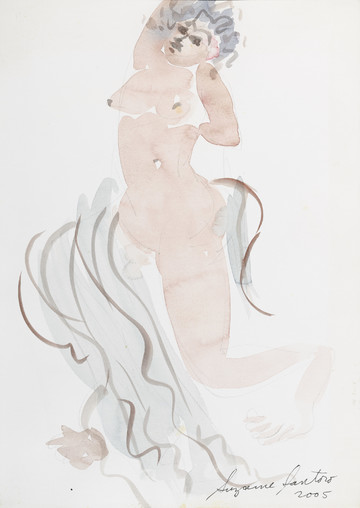
The Femaleness works are a series of about 80 watercolors on paper that depict women in movement (seemingly dancing), synthesizing a sedimentation of centuries of female representations. Their transversal references come from Santoro’s vast and long research on the representation of the female figure in Western iconography.
Left: Femaleness, 2005. Watercolor on paper. 35 x 25 cm. €4,000.- (framed)
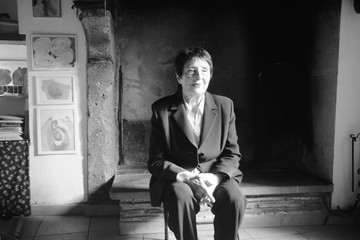
Known since the early 1970s for her influential series Black Mirrors, she has dedicated her life to the poetics and the politics of a female gaze on women.
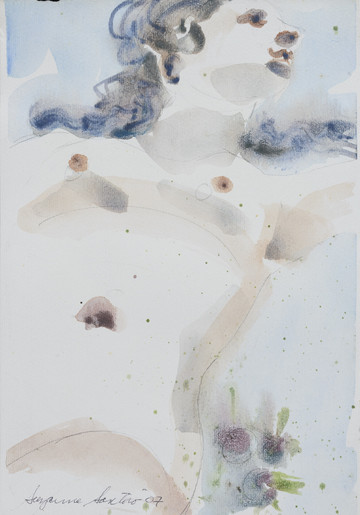
25x 17,5 cm
Watercolor on paper

24.6 x 17.9 cm
Watercolor on paper
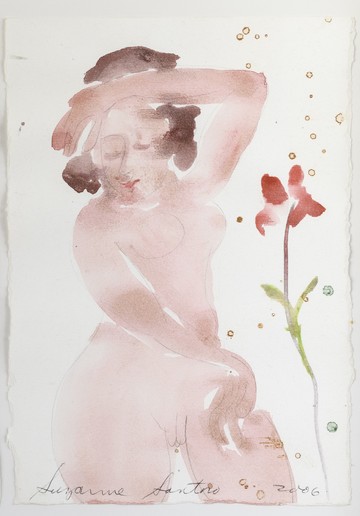
25x 17,5 cm
Watercolor on paper
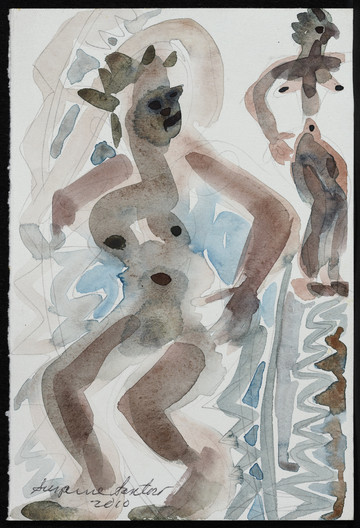
24x16,3 cm
Watercolor on paper
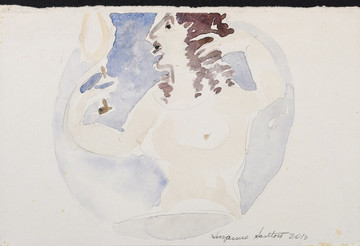
16x24 cm
Watercolor on paper

24,8x 17,4 cm
Watercolor on paper
Blood Roses (2004-2009)
The Blood Roses series develops the flower as a feminine symbol connected to the female lunar cycle. The flowers have bilateral symmetry, raising the theme of the double (ongoing in her art since the early 1970s) and standing as a metaphor for her relationship with the Other. For these paintings, Santoro used tempera on colored paper, producing thick, deep, and intense compositions.

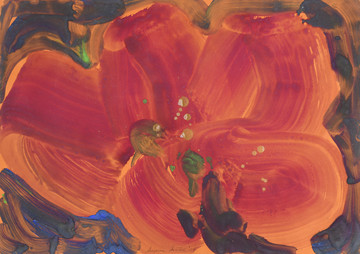
48,5x 68,5 cm
Tempera on paper
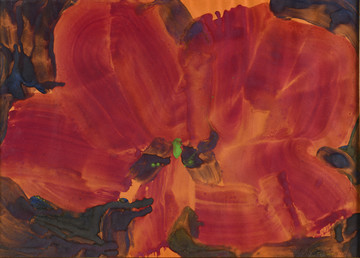
48,5x 68,5 cm
Tempera on paper
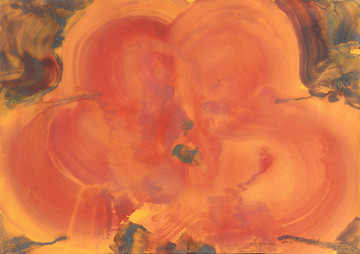
48,5x 68,6 cm
Tempera on paper

48,5x 68,1 cm
Tempera on paper
Beyond its feminist position, the strength of her work lies in how she addresses the history of representation. Santoro is questioning what and who is represented. And how do we see it? Her work offers multidimensional and spectral metaphors.
Blood Roses (2004-2009) and Femaleness (2006-2012), the two series of paintings on paper we are presenting, are part of a larger body of work that Santoro started in the 1990s. They were made through the repetition of motifs and gestures that are related to the origin of painting and that Santoro calls organic gesture, a movement starting as an impulse from the body, through the arm, and towards the paper.
Santoro proceeds in series, repeating similar gestures to formalize unpredictable and ancestral structures and forms, always linked to female representation but taking on multiple and polymorphic appearances. After she worked with appropriation, photography, and sculpture for about 20 years, the simple process of painting seemed a natural tool to continue to explore this theme.

